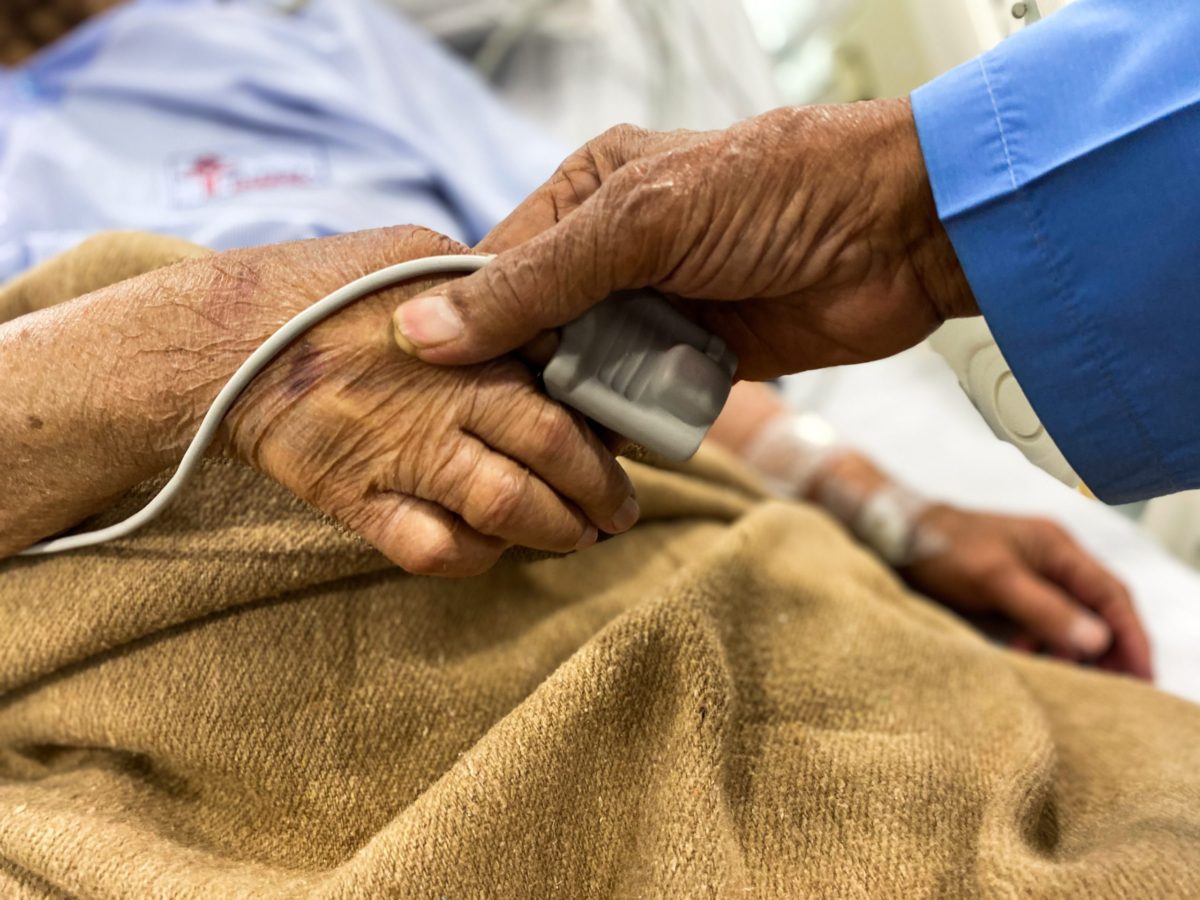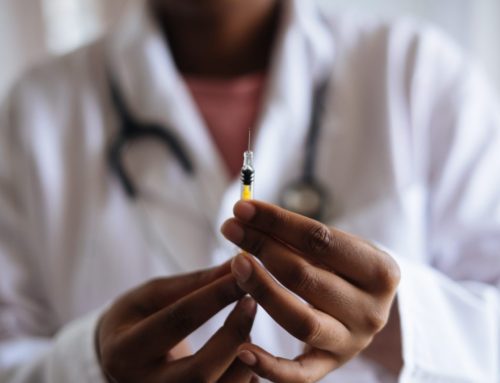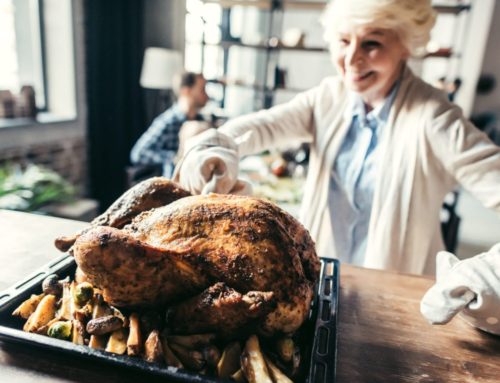All information in this post is directly from the CDC as of 01/06/21.
Older adults are at greater risk of requiring hospitalization or dying if diagnosed with COVID-19.
- Risk for severe illness with COVID-19 increases with age, with older adults at highest risk.
- Certain medical conditions can also increase risk for severe illness.
- People at increased risk, and those who live or visit with them, need to take precautions to protect themselves from getting COVID-19.
Increased Risk of Hospitalization or Death
Age Increases Risk for Severe Illness
The risk for severe illness with COVID-19 increases with age, with older adults at highest risk.
For example, people in their 50s are at higher risk for severe illness than people in their 40s. Similarly, people in their 60s or 70s are, in general, at higher risk for severe illness than people in their 50s. The greatest risk for severe illness from COVID-19 is among those aged 85 or older.
Severe illness means that a person with COVID-19 may require:
- hospitalization,
- intensive care, or a
- ventilator to help them breathe, or
- they may even die.
Age Increases Risk for Hospitalization
Older adults are at greater risk of requiring hospitalization or dying if they are diagnosed with COVID-19. As you get older, your risk of being hospitalized for COVID-19 increases.
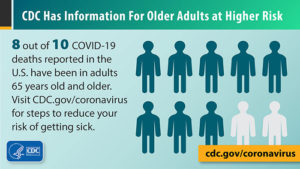
Compared to younger adults, older adults are more likely to require hospitalization if they get COVID-19
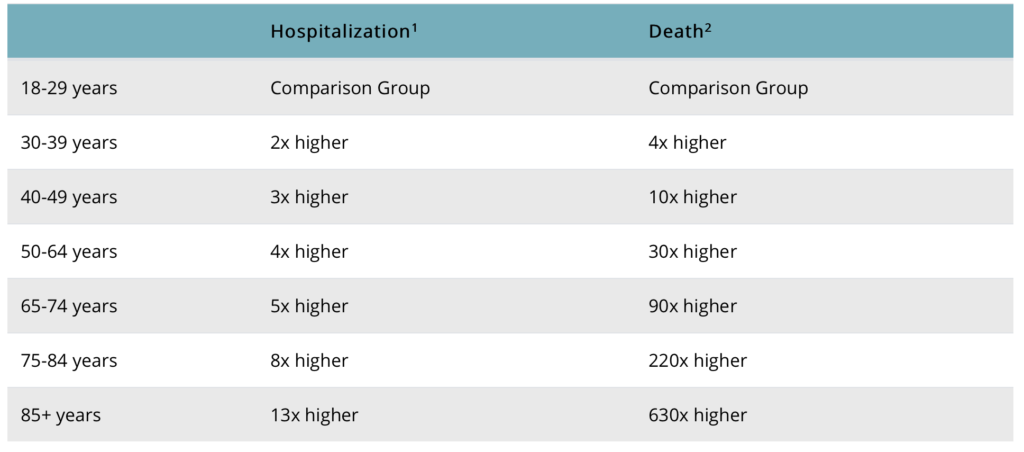
Certain Medical Conditions Can Increase Risk
Other factors can also increase your risk for severe illness, such as having certain underlying medical conditions. By understanding the factors that put you at an increased risk, you can make decisions about what kind of precautions to take in your daily life.
If you have an underlying medical condition, you should continue to follow your treatment plan:
- Continue your medicines and do not change your treatment plan without talking to your healthcare provider.
- Have at least a 30-day supply of prescription and non-prescription medicines. Talk to a healthcare provider, insurer, and pharmacist about getting an extra supply (i.e., more than 30 days) of prescription medicines, if possible, to reduce your trips to the pharmacy.
- Do not delay getting emergency medical care because of COVID-19. Emergency departments have contingency infection prevention plans to protect you from getting COVID-19 if you need care.
- Call your healthcare provider if you have any concerns about your underlying medical conditions or if you get sick and think that you may have COVID-19. If you need emergency help, call 911 right away.
- If you don’t have a healthcare provider, contact your nearest community health centerexternal icon or health department.
Reduce Your Risk of Getting Sick
Everyone, especially older adults and others at increased risk of severe illness, should take steps to protect themselves from getting COVID-19.
Steps to Reduce Your Risk
It is especially important for people at increased risk of severe illness from COVID-19, and those who live or visit with them, to protect themselves from getting COVID-19.
The best way to protect yourself and to help reduce the spread of the virus that causes COVID-19 is to:
- Wear a mask, when you interact with others.
- Limit your in-person interactions with other people as much as possible, particularly when indoors.
- Keep space between yourself and others (stay 6 feet away, which is about 2 arm lengths).
- Wash your hands often. If soap and water are not readily available, use a hand sanitizer that contains at least 60% alcohol.
- Avoid touching your eyes, nose, and mouth with unwashed hands.
- Cover coughs and sneezes with a tissue or the inside of your elbow. Then wash your hands.
- Clean and disinfect surfaces and things you touch often.
- Learn additional information for adults with disabilities.
- How to Protect Yourself
If you start feeling sick and think you may have COVID-19, get in touch with your healthcare provider within 24 hours.
Before You Go Out or Visit Family & Friends
Consider the level of risk before deciding to go out and ensure that people at increased risk of severe illness from COVID-19 and those who live with them, are taking steps to protect themselves.
There is no way to ensure you have zero risk of getting the virus that causes COVID-19. So, it is important to understand the risks and know how to reduce your risk as much as possible if or when you do resume some activities, run errands, and attend events and gatherings.
Consider the Level of Risk
In general, the more people you interact with, the more closely you interact with them, and the longer that interaction, the higher your risk of getting and spreading the virus that causes COVID-19.
Before you go out, consider the following:
- How many people will you interact with?
- Can you keep 6 feet of space between you and others?
- Will you be outdoors or indoors?
- What’s the length of time that you will be interacting with people?
- How likely is it that people will be wearing a mask?
Consider avoiding activities where taking protective measures may be difficult, such as activities where social distancing can’t be maintained.
Take Steps to Protect Yourself
Everyone should take steps to prevent getting and spreading the virus that causes COVID-19 to protect themselves, their communities, and people who are at increased risk of severe illness.
If you decide to engage in public activities:
- Protect yourself by practicing everyday preventive actions.
- Plan shopping trips when stores are typically less crowded in early morning or late in the evenings. Older adults can use “senior hours” when shopping.
- Use alternatives to on-site dining such as delivery, take-out, and curb-side pick-up.
- Keep these items on hand and use them when venturing out: a mask, tissues, and a hand sanitizer with at least 60% alcohol.
- Avoid others who are not wearing masks.
Wear masks
- Masks should be worn over the nose and mouth. Masks are especially important when it is difficult to stay at least 6 feet apart from others or when people are indoors to help protect each other.
- Masks offer some protection to you and are also meant to protect those around you, in case you are unknowingly infected with the virus that causes COVID-19.
- CDC recognizes that wearing masks may not be possible in every situation or for some people. Some older adults with cognitive, sensory, or behavioral issues might find wearing a mask difficult. Adaptations and alternatives should be considered whenever possible to increase the feasibility of wearing a mask or to reduce the risk of spreading COVID-19 if it is not possible to wear one. These adults need to take extra precautions when interacting with others. Additionally, some older adults may rely on reading lips or facial expressions during social interactions. This can be difficult when others are wearing masks that cover large portions of their face.
Encourage social distancing during your visit
- Visit with your friends and family outdoors, when possible. If this is not feasible, make sure the room or space is well-ventilated (for example, open windows or doors) and large enough to accommodate social distancing, staying 6 feet apart.
- Arrange tables and chairs to allow for social distancing. People from the same household can be in groups together and don’t need to be 6 feet apart from each other.
- Try to avoid close contact with your visitors. For example, don’t shake hands, elbow bump, or hug. Instead wave and verbally greet them.
- If possible, avoid others who are not wearing masks or ask others around you to wear masks.
- Consider keeping a list of people you visited or who visited you and when the visit occurred. This will help with contact tracing if someone becomes sick.
- Learn about additional considerations for adults with developmental or behavioral disorders who might have difficulty with social distancing.
Practice hand hygiene often
- Everyone should wash their hands with soap and water for at least 20 seconds at the beginning and end of the visit and whenever you think your hands may have become contaminated.
- If soap and water are not readily available, such as with outdoor visits or activities, use a hand sanitizer that contains at least 60% alcohol. Cover all surfaces of your hands and rub them together until they feel dry.
- Use single-use hand towels or paper towels for drying hands to avoid sharing towels. Have a no-touch trash can available for guests to use.
- Limit contact with commonly touched surfaces or shared items.
When to delay or cancel a visit
- Delay or cancel a visit if you or your visitors have symptoms of COVID-19 or have been exposed to someone with COVID-19 in the last 14 days.
- Anyone who has had close contact with a person with COVID-19 should stay home and monitor for symptoms.
- Consider current levels of COVID-19 infection in your specific community. If infection is widespread, consider delaying or cancelling a visit.
Precautions for Nursing Homes and Senior Living Facilities
If you, a family member, or friend lives in a nursing home, assisted living facility, or other type of senior living facility, you may be concerned about COVID-19.
To protect friends and family members in these facilities, CDC has advised that long-term care facilities:
- Restrict visitors,
- Require or recommend visitors (including healthcare workers, aides, and staff) wear masks over their nose and mouth, if visitors are allowed,
- Permit visitation only during select hours and limit the number of visitors per resident (e.g., no more than 2 visitors at one time),
- Schedule visitation in advance to enable continued social distancing,
- Restrict visitation to the resident’s room or another designated location at the facility (e.g., outside),
- Regularly check healthcare workers and residents for fevers and symptoms, and
- Limit activities within the facility to keep residents distanced from each other.
Learn more about the risks among people who live in nursing homes or long-term care facilities and about CDC’s guidance for nursing homes and long-term care facilities. The Centers for Medicare and Medicaid Services (CMS)pdf iconexternal icon has also developed guidance for visitations under various circumstances.
If You Are Sick or Think You Were Exposed to COVID-19
Contact Your Healthcare Provider & Seek Care
- If you have symptoms of COVID-19, get in touch with your healthcare provider within 24 hours, and follow steps for when you feel sick. You can use CDC’s self-checker to help you make decisions.
- If you or someone you know has COVID-19 emergency warning signs (e.g., trouble breathing, persistent chest pain, new confusion, inability to wake or stay awake, or bluish lips or face), seek emergency care immediately. Call 911.
- If you think you might have been exposed to someone with COVID-19, contact your healthcare provider. If you don’t have a healthcare provider, contact your nearest community health centerexternal icon or health department.
- You can visit your state or localexternal icon health department’s website to look for the latest local information on testing.
Check Your Symptoms
Symptoms of COVID-19 can range from mild symptoms to severe illness and death. Symptoms may appear 2-14 days after exposure.
In some cases, older adults and people of any age with underlying medical conditions may have symptoms that are not typically seen in others, or they may take longer than others to develop fever and other symptoms.
Fever Temperatures Can be Lower in Older Adults
In older adults (aged 65 and older), normal body temperature can be lower than in younger adults. For this reason, fever temperatures can also be lower in older adults.
If you are an older adult experiencing fever or other symptoms and want to get tested for the virus that causes COVID-19, call your healthcare provider first. You can also visit your state or localexternal icon health department’s website to look for the latest local information on testing. If you don’t have a healthcare provider, contact your nearest community health centerexternal icon or health department.
If you are caring for a patient aged 65 or older, be aware that a single reading higher than 100°F (37.8°C), multiple readings above 99°F (37.2°C), or a rise in temperature greater than 2°F (1.1°C) above the patient’s normal (baseline) temperature may be a sign of infection
Develop a Care Plan
A care plan summarizes your:
- medical conditions,
- medicines,
- healthcare providers,
- emergency contacts, and
- end-of-life care options (for example, advance directives).
Complete your care plan in consultation with your doctor, and if needed, with help from a family member, caregiver or home health aide.
A care plan can have benefits beyond the current pandemic. You can update your care plan every year, or any time you have a change in your health or medicines. Care plans can help reduce emergency room visits and hospitalizations and improve overall medical management for people with a chronic medical condition, resulting in better quality of life.
During the COVID-19 pandemic, having a care plan is an important part of emergency preparedness.
Everyday Steps to Stay Healthy
Staying healthy during the pandemic is important. Talk to your healthcare provider about whether your vaccinations and other preventive services are up to date to help prevent you from becoming ill with other diseases.
- It is particularly important for those at increased risk of severe illness, including older adults, to receive recommended vaccinations against influenza and pneumococcal disease.
- Remember the importance of staying physically active and practicing healthy habits to cope with stress.
- Talk with your healthcare provider about maintaining preventive services like cancer screenings during the pandemic.
- If you have a medical emergency, do not delay seeking emergency care.
- You may feel increased stress during this pandemic. Fear and anxiety can be overwhelming and cause strong emotions. Learn about stress and coping.
- Get tips on staying connected while at home in Englishpdf iconexternal icon and Spanishpdf iconexternal icon. There are community agencies who may be able to help, and call lines that provide a friendly voice and emotional support to older adults.
Getting Help at Home
Support is available if you need help with meals, household chores, home repairs, personal care, home health services, or transportation to your medical appointments and pharmacy. Contact our team today to learn more.

